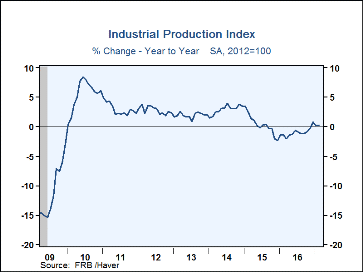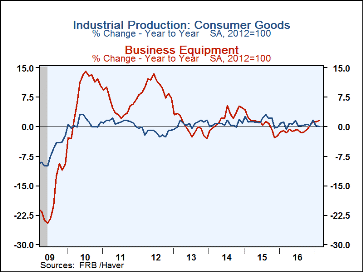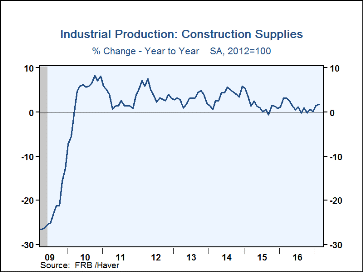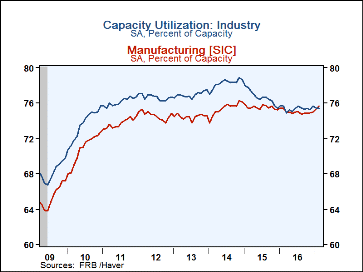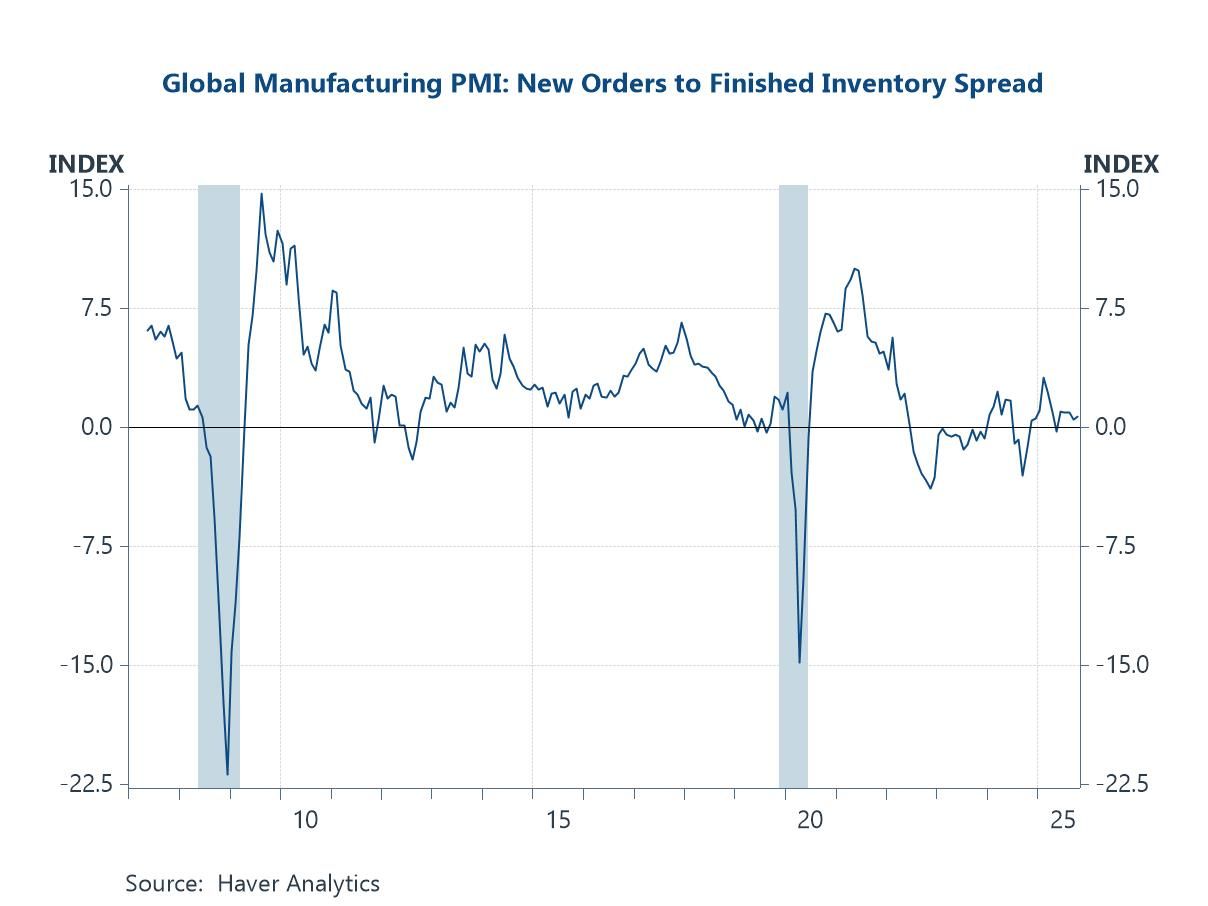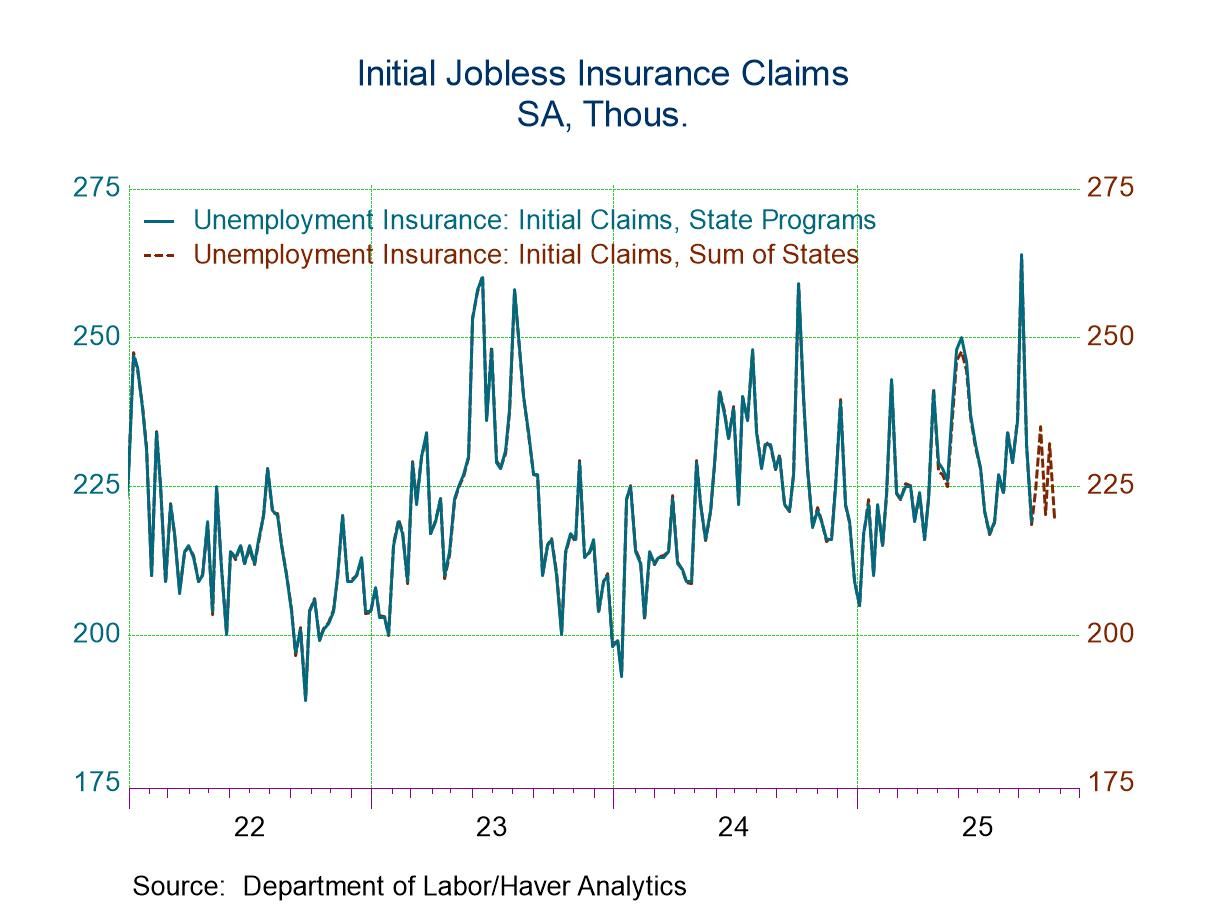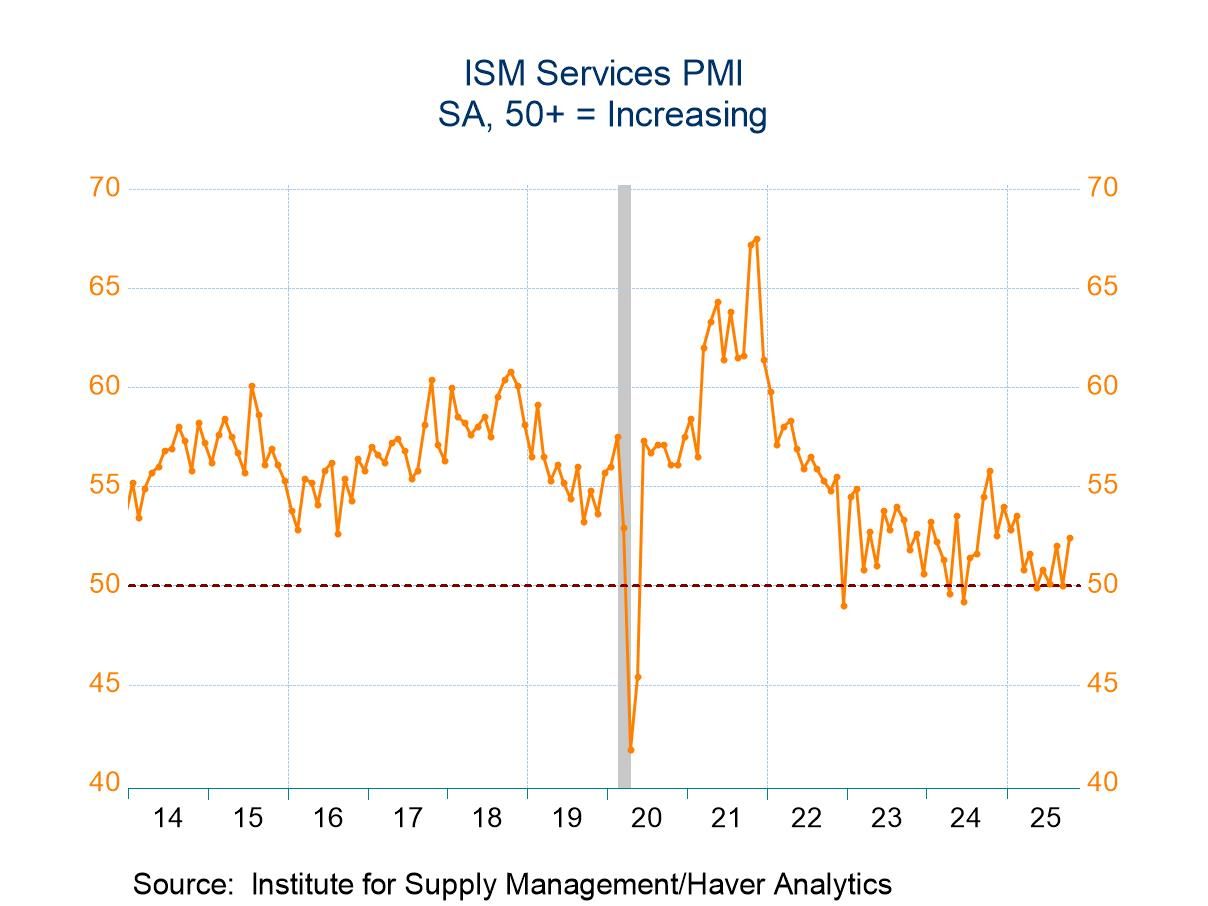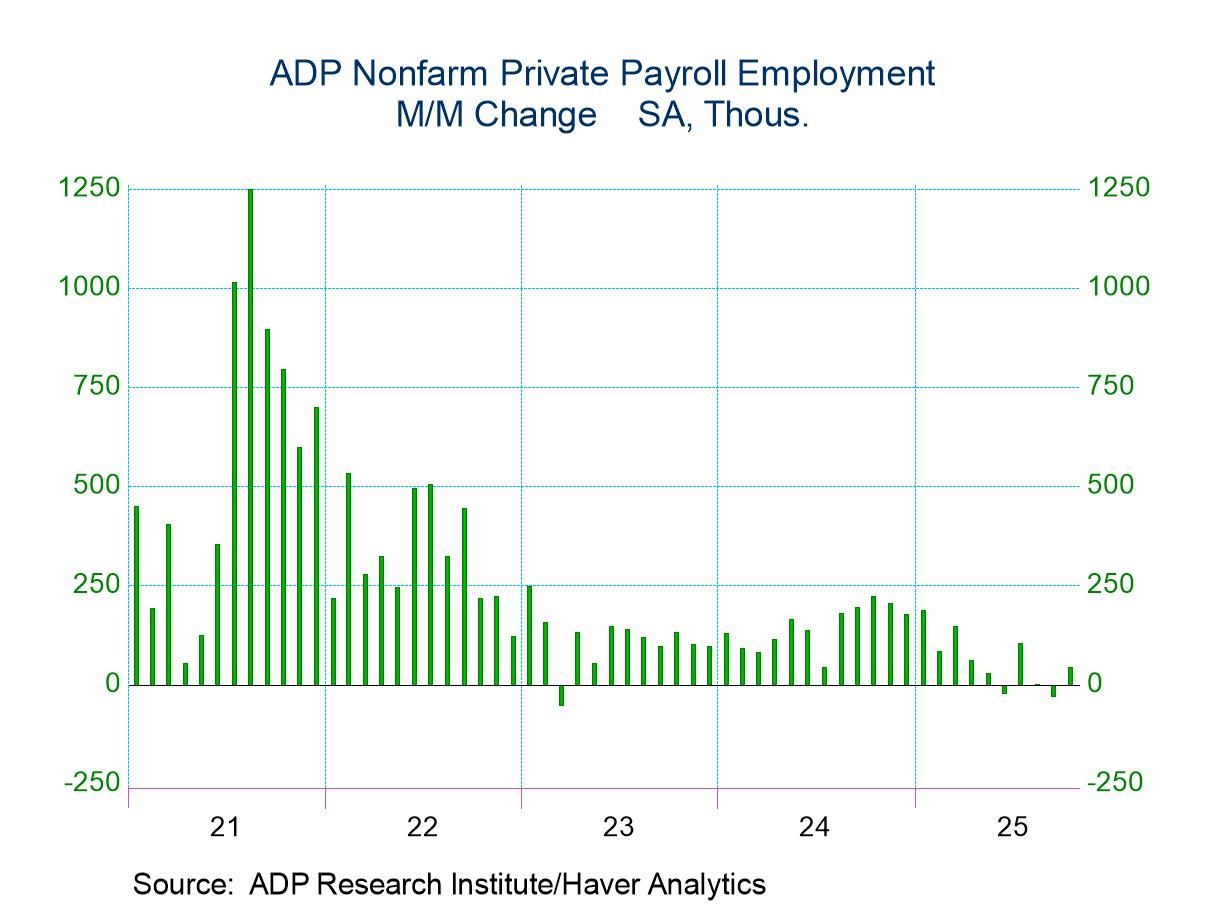 Global| Mar 17 2017
Global| Mar 17 2017U.S. Industrial Production Is Unchanged; Factory Output Improves Steadily
by:Tom Moeller
|in:Economy in Brief
Summary
Industrial production remained unchanged (+0.3% y/y) during February following a 0.1% January slip, revised from -0.3%. A 0.2% increase had been expected in the Action Economics Forecast Survey. Warm temperatures again provided a [...]
Industrial production remained unchanged (+0.3% y/y) during February following a 0.1% January slip, revised from -0.3%. A 0.2% increase had been expected in the Action Economics Forecast Survey. Warm temperatures again provided a decided influence on the overall reading, lessening utilities output by 5.7% (-7.0% y/y), about as it did in January. To the upside, manufacturing sector output strengthened 0.5% (1.2% y/y) following the same-sized January increase, revised from 0.2%. These were the strongest back-to-back results since late-2012. Mining output jumped 2.7% (1.8% y/y) following a 2.2% gain.
Output of construction supplies benefited from the warm weather and increased 1.3% (1.7% y/y), about the same as in January. Business equipment also rose a firm 0.7% (1.6% y/y), strengthened by a 1.2% jump (2.1 % y/y) in the production of industrial equipment. A 0.4% decline (+0.1% y/y) in consumer goods production reflected a 5.6% slide (-7.3% y/y) in energy product output. Nondurable, nonenergy consumer goods production rose 0.3% (0.1% y/y) driven by a 0.8% rise (1.9% y/y) in foods & tobacco. Chemical production eased 0.2% (-1.9% y/y) but clothing production held steady (-4.1% y/y). Durable consumer goods output also remained unchanged (+0.3% y/y), held back by a 3.6% drop (+0.5% y/y) in appliance & furniture production. A 0.4% rise (3.6% y/y) in auto production countered this decline, while output of computers, audio and video product production remained unchanged (+2.1% y/y).
Materials production eased 0.1% (+0.2% y/y), held back by a 1.7% decline (-0.5% y/y) in textile product output and a 1.5% drop (-2.1% y/y) in energy materials.
Amongst the special aggregate series, high-technology product production increased 0.2% (6.4% y/y. Factory output excluding high technology products rose 0.5% (0.9% y/y). Factory output excluding both high-tech and motor vehicles gained 0.5% (0.9% y/y).
Capacity utilization slipped to 75.4% with the decline in utility output. Factory sector utilization increased to 75.6%, its highest level since August 2015. Factory sector capacity rose 0.9% y/y, its quickest annual rate of increase since late-2015.
Industrial production and capacity data are included in Haver's USECON database, with additional detail in the IP database. The expectations figure is in the AS1REPNA database.
| Industrial Production (SA, % Change) | Feb | Jan | Dec | Feb Y/Y | 2016 | 2015 | 2014 |
|---|---|---|---|---|---|---|---|
| Total Output | 0.0 | -0.1 | 0.6 | 0.3 | -1.0 | 0.3 | 2.9 |
| Manufacturing | 0.5 | 0.5 | 0.2 | 1.2 | 0.1 | 0.8 | 1.3 |
| Consumer Goods | -0.4 | -0.1 | 1.2 | 0.1 | 0.7 | 1.4 | 0.7 |
| Business Equipment | 0.7 | -0.1 | 0.9 | 1.6 | -0.8 | 0.7 | 2.4 |
| Construction Supplies | 1.3 | 1.4 | -0.3 | 1.7 | 1.1 | 1.5 | 3.7 |
| Materials | -0.1 | -0.1 | 0.3 | 0.2 | -2.0 | 0.5 | 4.7 |
| Utilities | -5.7 | -5.8 | 5.4 | -7.0 | -0.2 | -0.7 | 1.3 |
| Mining | 2.7 | 2.2 | -1.4 | 1.8 | -9.3 | -1.8 | 11.0 |
| Capacity Utilization (%) | 75.4 | 75.5 | 75.6 | 75.6 | 75.4 | 76.7 | 78.2 |
| Manufacturing | 75.6 | 75.3 | 75.0 | 75.4 | 75.0 | 75.5 | 75.4 |
Tom Moeller
AuthorMore in Author Profile »Prior to joining Haver Analytics in 2000, Mr. Moeller worked as the Economist at Chancellor Capital Management from 1985 to 1999. There, he developed comprehensive economic forecasts and interpreted economic data for equity and fixed income portfolio managers. Also at Chancellor, Mr. Moeller worked as an equity analyst and was responsible for researching and rating companies in the economically sensitive automobile and housing industries for investment in Chancellor’s equity portfolio. Prior to joining Chancellor, Mr. Moeller was an Economist at Citibank from 1979 to 1984. He also analyzed pricing behavior in the metals industry for the Council on Wage and Price Stability in Washington, D.C. In 1999, Mr. Moeller received the award for most accurate forecast from the Forecasters' Club of New York. From 1990 to 1992 he was President of the New York Association for Business Economists. Mr. Moeller earned an M.B.A. in Finance from Fordham University, where he graduated in 1987. He holds a Bachelor of Arts in Economics from George Washington University.


